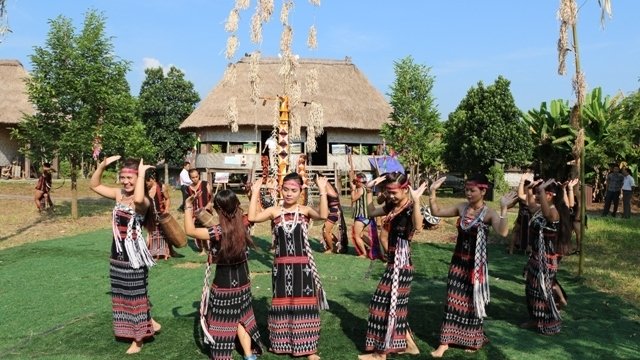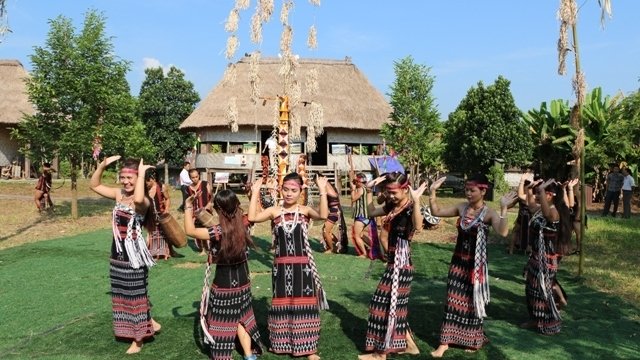
A series of cultural activities will take place at the Vietnam National Village for Ethnic Culture and Tourism in Dong Mo Tourism Area in Son Tay Town, Hanoi, from December 1, 2018 to January 2, 2019, to welcome the New Year 2019.

A series of cultural activities will take place at the Vietnam National Village for Ethnic Culture and Tourism in Dong Mo Tourism Area in Son Tay, Hanoi, from December 1, 2018 to January 2, 2019, to welcome the New Year 2019. (Representative photo).
The activities will associate with cultural space and activities of ethnic people to prepare to welcome the New Year 2019, according to announcement of the Ministry of Culture, Sports and Tourism on November 20.
The organising board will also introduce folk activities, ethnic people’s dancing, cuisine, specialties of ethnic groups; creating destination to attract tourists and gradually improve the tourism products of the Vietnam National Village for Ethnic Culture and Tourism.
A reappearing mountain village fair will be the highlight of the series of cultural activities. It will reflect the rich cultural space of the Northwest and Northeastern ethnic groups, creating an atmosphere of impressive highland market for visitors to enjoy the food, traditional specialties, folk dancing and folk games by the Mong, Lao, Khang, Thai, Tay, Dao and Khmu ethnic people.
In addition to daily activities, weekend tourism programmes will continue to introduce the culture, customs and habits of 13 ethnic peoples, along with activities to experience at the "common house" of the community of 54 ethnic groups in Vietnam.
The event promises to strengthening exchanges between ethnic groups, attracting tourists to the Vietnam National Village for Ethnic Culture and Tourism.
Source: NDO
With an increasingly vibrant and widespread emulation movement aimed at building cultured residential areas and cultured families, Yen Thuy District has been making steady progress toward improving both the material and spiritual well-being of its people, while fostering a civilized, prosperous, beautiful, and progressive community.
Once lacking recreational spaces and community facilities, Residential Group 2 in Quynh Lam Ward (Hoa Binh City) has recently received attention for the construction of a new, spacious, and fully equipped cultural house. The project followed the model of state support combined with public contributions in both labor and funding.
The "All people unite to build cultural life" movement, which has been effectively integrated with Kim Boi district’s socio-economic development goals, is fostering a lively spirit of emulation across local residential areas, hamlets, villages, public agencies, and enterprises. In addition, through the initiative, traditional cultural values are being preserved and promoted, while community solidarity and mutual support in poverty reduction and economic development are being strengthened.
A working delegation of the Hoa Binh provincial People’s Committee led by its Permanent Vice Chairman Nguyen Van Toan on June 11 inspected the progress of a project to build the Mo Muong Cultural Heritage Conservation Space linked to tourism services in Hop Phong commune, Cao Phong district.
Born and growing in the heroic land of Muong Dong, Dinh Thi Kieu Dung, a resident in Bo town of Kim Boi district, in her childhood was nurtured by the sweet lullabies of her grandmother and mother. These melodies deeply imprinted on her soul, becoming an inseparable part of her love for her ethnic group's culture. For over 20 years, this love for her hometown has driven Dung to research, collect, and pass down the cultural values of the Muong people to future generations.
In the final days of May, the Ethnic Art Troupe of Hoa Binh Province organized performances to serve the people in remote, mountainous, and particularly disadvantaged areas within the province. These were not just ordinary artistic shows, but they were the meaningful journeys aimed at spreading cultural values, enhancing the spiritual life of the people and contributing to the preservation of ethnic minority cultural identities.



